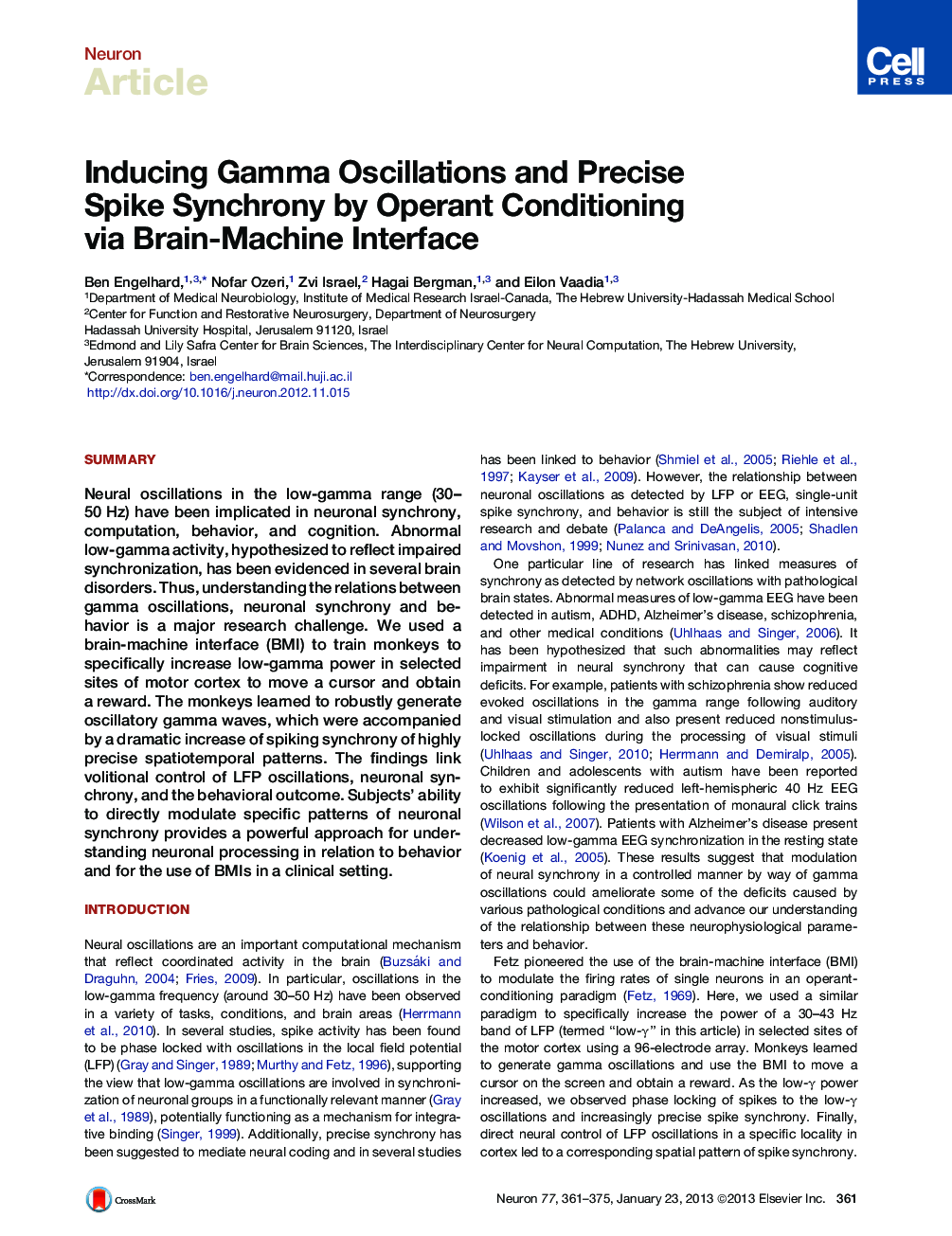| Article ID | Journal | Published Year | Pages | File Type |
|---|---|---|---|---|
| 4321184 | Neuron | 2013 | 15 Pages |
SummaryNeural oscillations in the low-gamma range (30–50 Hz) have been implicated in neuronal synchrony, computation, behavior, and cognition. Abnormal low-gamma activity, hypothesized to reflect impaired synchronization, has been evidenced in several brain disorders. Thus, understanding the relations between gamma oscillations, neuronal synchrony and behavior is a major research challenge. We used a brain-machine interface (BMI) to train monkeys to specifically increase low-gamma power in selected sites of motor cortex to move a cursor and obtain a reward. The monkeys learned to robustly generate oscillatory gamma waves, which were accompanied by a dramatic increase of spiking synchrony of highly precise spatiotemporal patterns. The findings link volitional control of LFP oscillations, neuronal synchrony, and the behavioral outcome. Subjects’ ability to directly modulate specific patterns of neuronal synchrony provides a powerful approach for understanding neuronal processing in relation to behavior and for the use of BMIs in a clinical setting.
► Conditioning of oscillations in a specific frequency band of local field potentials ► Volitional modulation of precise neuronal synchronization in a specific cortical site ► Spatiotemporal patterns of γ oscillations and spike synchrony are highly correlated
